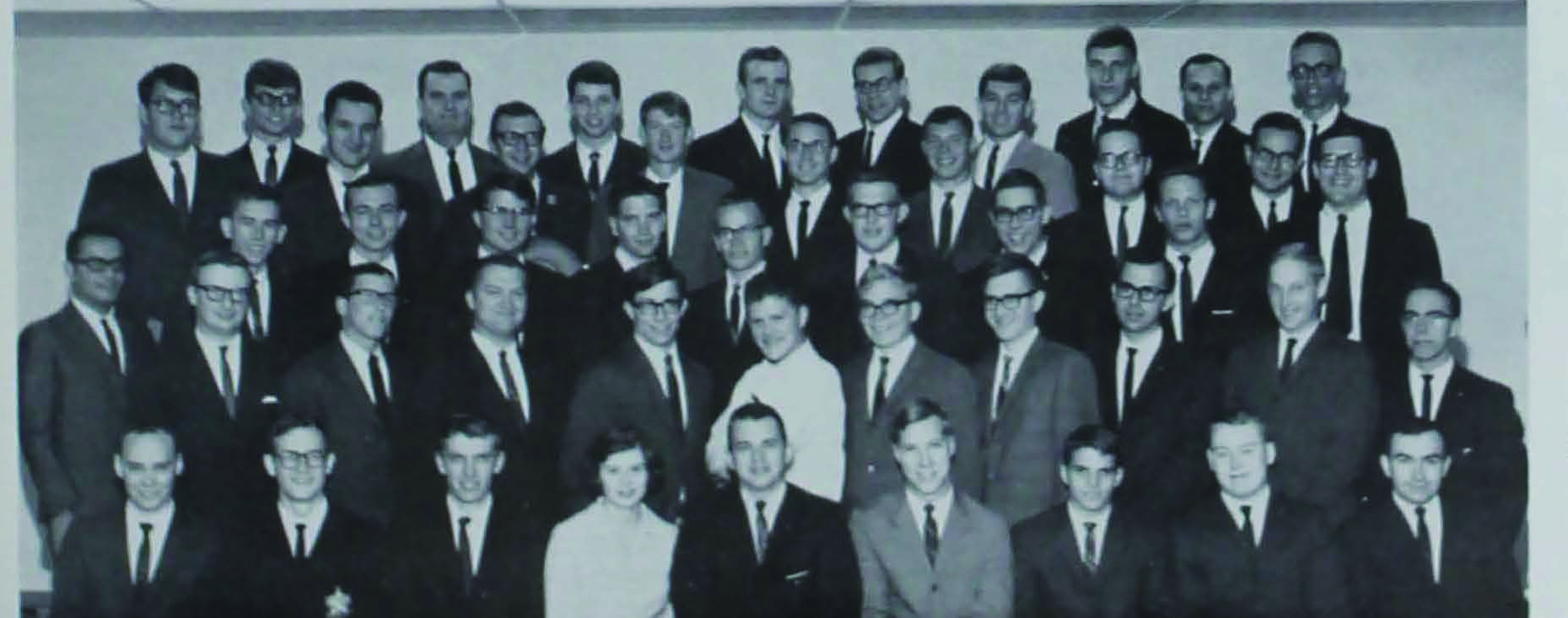Iowa State’s Department of Electrical and Computer Engineering is celebrating Women’s History Month with a series highlighting alumnae, faculty and students. This is the first in a multi-part series. Click here for more Women’s History Month coverage.

While Alice (Churchill) Camerlengo was the first female at Iowa State University to earn a degree in electrical engineering in 1937, it would be another 30 years before the department saw its second.
Carol Fisher was the second female to graduate from Iowa State with a degree in electrical engineering from (now named) the Department of Electrical and Computer Engineering (ECpE).
While at Iowa State, Carol was a member of the Institute of Electrical and Electronics Engineering (IEEE), along with her husband Edwin (Ed), who served as chapter president in 1967. She was a member of Electrical Engineering Wives Club, where she and the other members received a PHT (Putting Hubby Through) certificate, and Kappa Phi, the Methodist women’s service sorority, where she served as vice president.
Carol met her husband Edwin (Ed) in the fall of 1963. The two were in the same Physics 221 class and spent most of their freshman years studying together. “The building [Physics Hall] became a ‘special place’ for us,” Carol said. The two got married June 19, 1965.
The Monday after their graduation, the Fishers were in Minneapolis, Minnesota, as Carol started working at Honeywell Aerospace Division and was the only female electrical engineer there.
“Being the only female EE at Honeywell had advantages because everyone knew who I was,” Carol said. “I was given raises without asking and could have a flexible work schedule.”
Five years later, they moved to Tulsa, Oklahoma for Ed’s new job. “I decided that I would take time off and enjoy my two sons for the summer,” Carol said. “The summer lasted 17 years.”
While her children were in high school, Carol decided to take classes at Tulsa Junior College where she earned her Certificate of Achievement in Computer Programming (Transaction Processing Option). “I enjoyed learning how to program in Assembler Language,” Carol said.
Carol later began working with American Airlines primarily working with SABRE, a computer reservation system which was developed to automate the way American Airlines booked reservations. Starting at level one as a programmer, she worked her way up to level four as an architect in 10 years. Carol retired from SABRE in 2002.
Since retirement, Carol has worked with her local American Association of University Women (AAUW) to produce a conference on “Cinderella Doesn’t Live Here Anymore,” a one-day education program about male dominated fields for girls in grades six through eight.
The conference had a variety of speakers including police women, firefighters, paramedics, car mechanics, lawyers, mechanical engineers, computer programmers, airline pilots, chiropractors, surgeons and dentists.
“[I think we need to] encourage all the people who say ‘math was too hard for me’ or ‘I don’t like math’ to stop thinking those negative statements,” Carol said. “When girls hear these statements, they may then say the same thing without giving math a chance.”
Carol and her AAUW group have also held a conference for girls in fifth and sixth grade, providing hands-on experience in science, technology, engineering and mathematics (STEM) classes. “We also had classes for parents to attend,” Carol said. “I like to tell all girls how I have loved math all my life and I have used it in many different ways.”
Giving children opportunities to have hands-on experience in STEM fields can increase female representation in the disciplines while encouraging and inspiring both boys and girls to learn more about what STEM has to offer.
Carol cited Grace Hopper and the women behind “Hidden Figures,” Katherine Johnson, Dorothy Vaughan and Mary Jackson, as inspiring women in STEM.
“Grace Hopper worked on the team that created the first computer language compiler, which lead to the popular COBOL programming language,” Carol said. “Katherine Johnson, Dorothy Vaughan and Mary Jackson are inspiring the girls of today.”
As aspiring female engineers look toward entering a field that is still fairly dominated by men, Carol also thinks it is about the steps you take toward accomplishing your goals.
“Before a female engineer goes on interviews or starts working, she should decide if she wants to be a lady engineer or one of the guys,” Carol said. “How you present yourself, on the first day, you will be treated that way from then on.”
